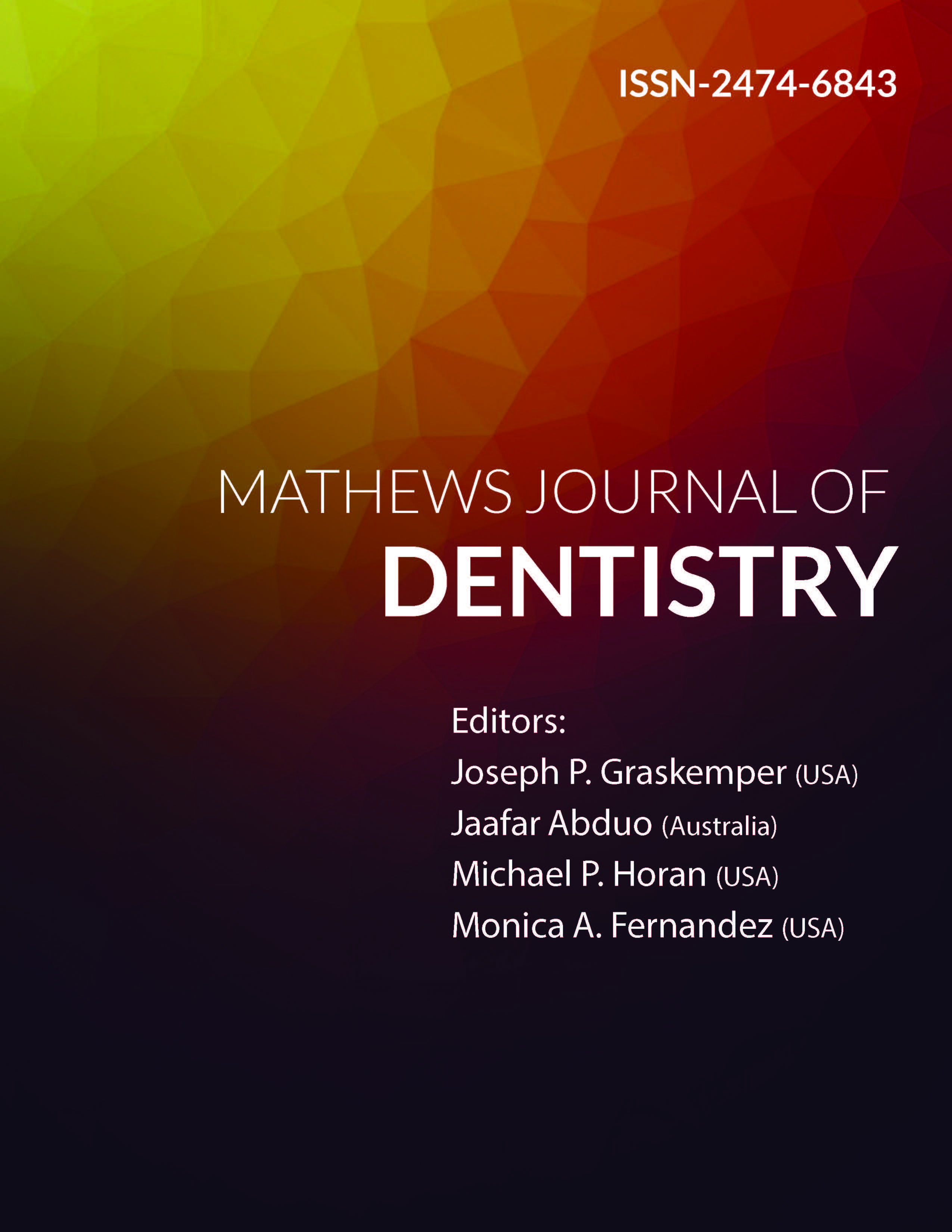
Information Links
Previous Issues Volume 5, Issue 1 - 2021
Diagnostic Accuracy of Digital Radiography and Novel Diagnostic Tools versus Visual ICDAS Criteria: A Systematic Review
Shereen Hafez Ibrahim1*, Reham Nabil2, Peter Edward2
1Assistant professor of Conservative Dentistry, Faculty of Dentistry, Cairo University, Cairo, Egypt
2Assistant lecturer of Conservative Dentistry, Faculty of Dentistry, Cairo University, Cairo, Egypt
*Corresponding author: Shereen Hafez Ibrahim, Associate Professor of Conservative Dentistry, Department of Conservative Dentistry, Faculty of Dentistry, Cairo University, 11 EL-Saraya St. Manial, Cairo, Postal Code: 11553, Egypt, Tel:+201099296591; E-mail: [email protected]
Received Date: March 10, 2021
Publication Date: April 13, 2021
Citation: Ibrahim SH, et al. © (2021).
Citation: Ibrahim SH, Nabil R, Edward P. (2021 Diagnostic Accuracy of Digital Radiography and Novel Diagnostic Tools versus Visual ICDAS Criteria: A Systematic Review. Mathews J Dentistry. 5(1):27.
ABSTRACT
Purpose: To evaluate the diagnostic accuracy of digital radiography and other novel diagnostic tools compared to visual ICDAS criteria.
Materials and Methods: Two reviewers performed a literature search up to May 2020 in three databases: PubMed, Google Scholar, and Cochrane Library. Only in-vivo studies that evaluated the diagnostic accuracy of digital radiography, Diagnodent, Vistaproof, Soprolife, and ICDAS criteria were included.
Results: A total of 27 in vivo studies were included in the systematic review. Studies included suggested that digital dental radiography proved to be a reliable tool in detecting initial carious lesions/ especially proximal lesions. The Diagnodent device was proved to be an efficient adjunct to other detection methods, especially in the case of non-experienced clinicians. For VistaCam/VistaProof assessment, it was found that in some articles, VistaCam proved high accuracy in detecting early carious lesions with moderate to strong correlation in comparison to results obtained by visual and tactile methods ICDAS criteria. ICDAS criteria were considered to be sufficient alone in detecting occlusal caries.
Conclusions: The in vivo evidence suggested that None of the diagnostic methods alone are sufficient for diagnosis of dental caries.
Keywords: diagnostic accuracy, digital radiography, novel diagnostic tools, ICDAS visual criteria, systematic review.